I’m sure by now that most people reading this have heard the term “Child of the Eighties.” As someone who’s formative years took place in that decade, specific memories of Transformers were etched in my mind: a massive variety of characters with equally interesting personalities, storylines that often revolved around a dark history we never knew, and sweet, sweet robot designs that seemed to keep getting bigger. When the original animated movie appeared in theaters in 1986, it seemed to push the series into surprisingly dark territory. It was violent, had religious undertones, and finally shed light on the robotic homeworld of Cybertron.
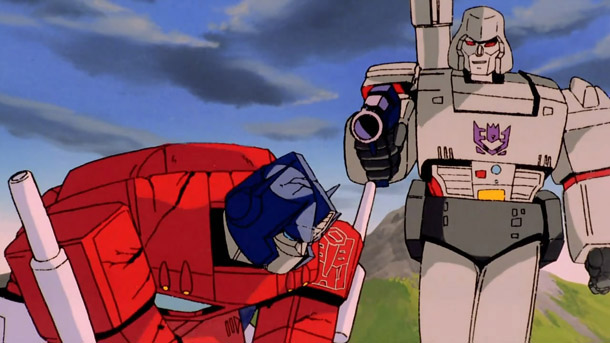
Michael Bay’s blockbusters of the last few years eschewed a lot of that nostalgia for big-budget thrills, and were met with mixed reviews as the series progressed. They were fun, but they didn’t seem like the Transformers we grew up with.
High Moon Studios is caught in the middle. The developer not only needs to interpret Bay’s films into video game format, but also to pump out a secondary side series that keeps the license on retailer shelves in between film years. While their War for Cybertron was seen as a fun romp through the Transformers universe, for its sequel the team opted to go down the darker narrative route of the animated series, circling that 1986 film and aiming to reinterpret its thematic elements for a modern audience.
And guess what? Fall of Cybertron absolutely nails it.
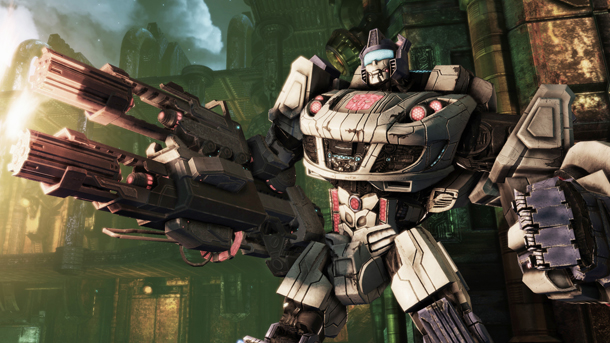
The narrative of the game mirrors a lot of what the film tries to portray: the Autobots essentially abandoning their homeworld in efforts to survive a growing Decepticon onslaught. There’s an Ark, ancient gods, death and rebirth, and it comes off as mature with enough light elements to keep it from feeling nihilistic. It respects the source material and focuses the narrative much more than its predecessor, relying on a linear plot that weaves Autobot and Decepticon in and out of the war. It showcases the series’ many characters well and highlighted many of the internal struggles that each character had. Where the Bay films were shallow interpretations of the character stereotypes, here they come off as genuine. In fact, I felt the Decepticons were far more interesting than the heroic Autobots; Soundwave’s drive for scientific perfection, the Combaticons desire to be respected as war heroes, and even Starscream’s plotting to overthrow Megatron explored the gray area of the robots that we as children never really cared about.
The plot is helped along by its visuals too. The locales, which shift from cities to underworld, biospheres to the backs of massive giants, are varied and fresh and continually keep me guessing as to where I would end up next. They portray destruction — the aftermath of a vicious war — and the secrets of the planet that could turn the tide. Especially interesting to me is the underground Energon lake surrounded by rusty ruins, with its winding tunnels and hidden sanctuaries. How a place like this could have remained hidden from millions of years of robot traversal and advanced technology on Cybertron, though, I couldn’t guess. Plot holes can be as big as black holes in video games sometimes.
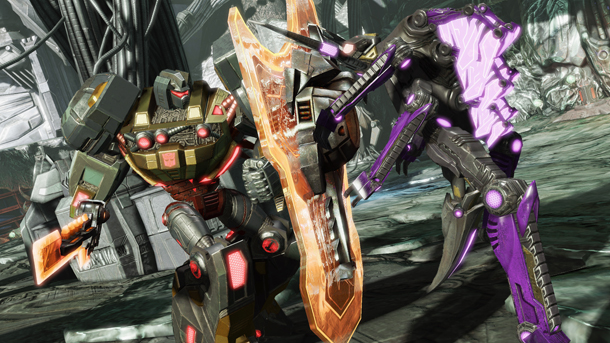
Everything is shiny. Being a mechanical planet, the excuse for every wall to be highly glossy is plausible but… man, do things get shiny. It can feel a bit distracting, especially when there are plenty of robots on the screen at once. There are some nice touches though, as the locales move and come alive as the robots walk through and explore them.
The animations excel when used to show off the different robots’ personalities. Sound Wave is stiff and conservative; Metroplex is slow and lumbering; and Jazz’s capoeira as he transforms and jumps do well to paint a picture of the characters through motion. The developers seemed to design the proportions of the characters on the screen to be akin to action figures in a living room. The robots feel like just the right size to “grab” and navigate around a giant living room. Perhaps this will get me to become interested in the actual toys again.
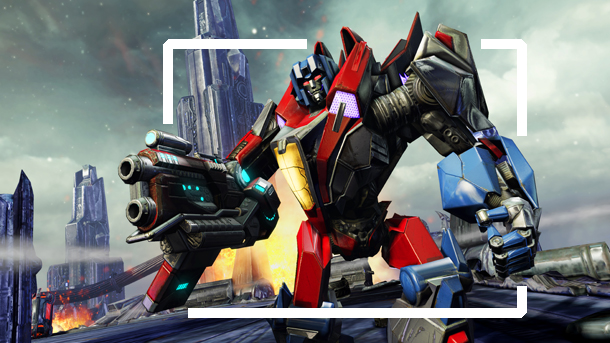
If only the gameplay were as up-to-snuff.
While it’s fairly basic when it comes to third-person action games — jumping, shooting, and special moves are all in tow and executed just fine — the lack of any real cover mechanic can hamper strategy. The robots are supposed to be pretty mobile, but apparently crouching wasn’t programmed into their AI. It makes for sometimes painful battles that need to be played over and over again until I finally defeat the onslaught of enemies. It’s almost primitive when it’s compared to other modern third-person shooters, and it forced me to keep moving instead of the now common pop-n-stop. The vehicles are a pain to drive, and I try to avoid that mode as much as possible. While the robots have an almost believable weight/physics to them, the vehicles don’t. They’re too “floaty”; they don’t react to their environments; and they feel far too slow. In fact, they mostly felt useless unless I was forced to use them.
If it wasn’t for the overly basic gameplay, the game would really be a standout. I guess it still has to be easy enough for children to play, as that’s where the license is currently aimed at.
Looking back, that 1986 movie wasn’t nearly as great as my memories of it were. Thankfully Fall of Cybertron rekindles those memories, providing a modern, fresh interpretation of that generation of robots that hits on the film’s dark theme. We see Cybertron, we’re dropped into the struggle for survival. It’s 1986’s version of 2005, using modern technology to make it come to life. There’s that pivotal moment in the movie where Optimus Prime dies, and I cried like crazy as a 7-yr old should. While there isn’t a similar sequence hear, the remainder of that film’s feel is captured.
It’s what it would be like if I were to play with my Transformers action figures now, as an adult with knowledge of how the robots might actually react if they weren’t just blowing stuff up. At least this time I don’t feel like a giant dork doing it.
This review is based on a copy of the game sent to SideQuesting by the publisher. It was played on a Playstation 3.

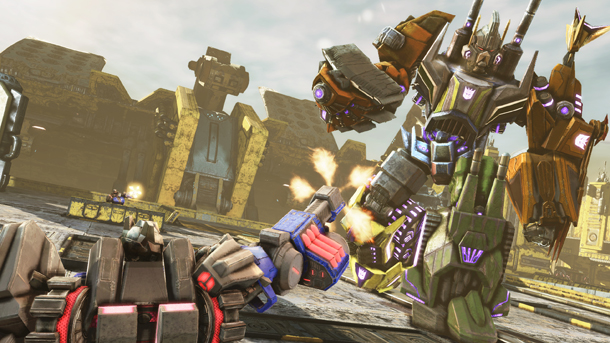
No Comments